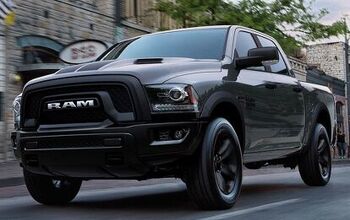Better Place Signs Contract In China

Things have been a little quiet around Better Place and their battery switching solution. Everybody is waiting for their Denmark and Israel projects to finally take off. The promised land of EVs of course is China: A huge population, a large untapped car market, and a government that gets nervous when thinking about long and perilous supply lines of foreign oil. The Chinese government demands EVs from its automakers, and just about each had a prototype or more at the Shanghai Auto Show that had a plug and a cord. Just don’t ask when you can buy one.
Better Place now announced a strategic agreement with China Southern Power Grid Co. (CSG), the world’s eighth largest utility company. First step is to establish a battery switch station and joint education center in the southern city of Guangzhou before the end of the year, while a joint-venture partnership is being formalized. The Guangzhou city government will encourage local car manufacturers, such as Guangzhou Automobile Industry Group, to produce electric cars with switchable batteries.
China Southern Grid Chairman Zhao Jianguo believes that “the battery-switch model may become mainstream in China.”
At the “2011 International Forum on Electric Vehicle Pilot City an Industry Development” in Shanghai, an executive of a Shenzhen battery maker warned about fast charging. It should only by used in emergency situations, because it might kill the battery. Also, fast charging puts high demands on the grid. Better Place sees a trend towards battery switching and slow charging that is spearheaded by utility companies and the Chinese government, says Better Place spokesman John Proctor. At the conference, State Grid said they would build over 2,300 switching sites by 2015.
With the Better Place business model, you lease the battery and subscribe to a number of annual miles, just like in a cell phone plan.

Bertel Schmitt comes back to journalism after taking a 35 year break in advertising and marketing. He ran and owned advertising agencies in Duesseldorf, Germany, and New York City. Volkswagen A.G. was Bertel's most important corporate account. Schmitt's advertising and marketing career touched many corners of the industry with a special focus on automotive products and services. Since 2004, he lives in Japan and China with his wife <a href="http://www.tomokoandbertel.com"> Tomoko </a>. Bertel Schmitt is a founding board member of the <a href="http://www.offshoresuperseries.com"> Offshore Super Series </a>, an American offshore powerboat racing organization. He is co-owner of the racing team Typhoon.
More by Bertel Schmitt
Latest Car Reviews
Read moreLatest Product Reviews
Read moreRecent Comments
- Calrson Fan We are already seeing multiple manufacturers steering away from EVs to Hybrids & PHEVs. Suspect the market will follow. Battery tech isn't anywhere close to where it needs to be for EV's to replace ICE's. Neither is the electrical grid or charging infrastructure. PHEV's still have the drawback that if you can't charge at home your not a potential customer. I've heard stories of people with Volts that never charge them but that's a unique kind of stupidity. If you can't or don't want to charge your PHEV then just get a hybrid.
- AZFelix The last time I missed the Malibu was when one swerved into my lane and I had to brake hard to avoid a collision. 1 out of 5⭐️. Do not recommend.
- 2ACL I won't miss it; it was decent at launch, but in addition to the bad packaging, GM did little to keep it relevant in the segment. I'd prefer that another domestic automaker doesn't just give up on the mainstream sedan, but unlike some of Ford's swan songs, the Malibu made an indifferent case for why they should live.
- ToolGuy TG grows weary of purchasing gasoline. I don't care so much how or why, I am just tired of it. I still buy petroleum products, not 'boycotting oil,' but backing away from gasoline where I can. Sample size = 1.
- Probert Maybe it's not too late for the Dodge Neon I've always dreamed of!!! To the keyboard Robin!

































Comments
Join the conversation
I wonder how well this works when the undercarriage is packed with snow, dirt, and saltwater from the winter roads. This company's idea has been a topic here before, and it's fraught with problematic details that need to be worked out.
Since some BP fanboy or PR flack used your article as a Wikipedia citation, please note this correction: "State Grid plans to build 2,351 electric-charging and battery-swap stations with 220,000 charging poles". But they did NOT say how may would be battery-swap stations; instead the director of the State Grid smart grid research center commented "The construction of a large-scale charging station costs 20 to 30 million yuan ($3.05-4.57 million) and a small-scale one costs less than 10 million yuan, but it costs more than 100 million yuan to build a battery-swap station." http://www.sgeri.sgcc.com.cn/english/Center/Viewpoints/98003.shtml